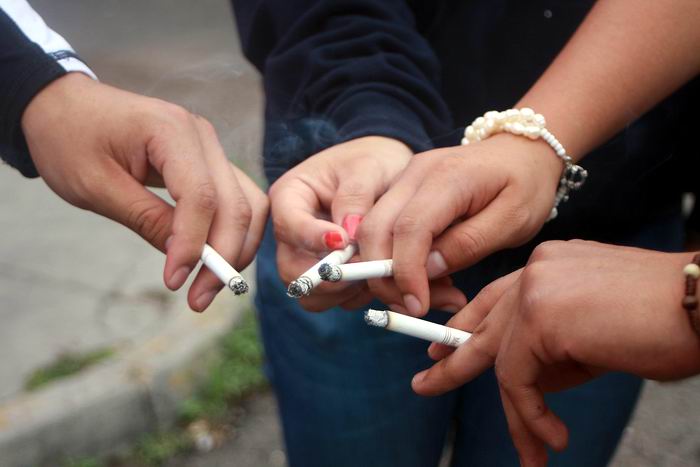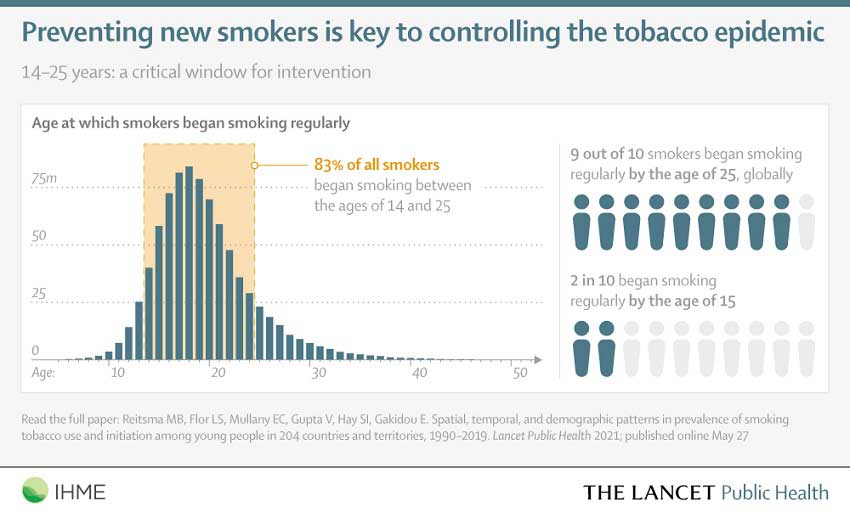
On May 31, World No Tobacco Day, 26 calls attention to this dangerous habit at early ages.
Las Tunas, Cuba.- I see them gathering with many intrigues. Some are on their toes and others are more daring. They walk at the pace of giants. Their little heads are twisted together, they look to all sides and I hear the laughter. I follow them expectantly. It's been years since I've been able to stop getting involved when children are involved... The afternoon and evening prove me right. There is something strange. The red dots on the cigarettes take away my doubts. Ah, they are smoking...
From their height, they could be fourth or fifth-graders, but that is no longer a reliable reference. Therefore, I have to listen more closely. In addition, out of nowhere, I hear more. The picket line of four boys and one girl are from Secundaria Básica and our neighbors. Only the girl is a Primary School girl and she wipes the smoke away from her face as best she can while gazing absorbedly at the "big", lanky little men. They stand right on my corner, in no man's land.
The "lit" group sleeps a while longer, even though night has fallen. You can hear them giggling, from time to time, and they seem like an innocent amalgam of witticisms, but the red dots don't stop. It's like a joke... only that the lungs, also "beardless", can't stand such a discharge of irresponsible testosterone.

The boys are the first to put their cigarettes to their lips. In their heads they reproduce what they see daily in many scenarios, teenagers who smoke and that makes them popular among girls. It is like crossing the fence of adulthood and leaving behind a stage, a concept well established in the children's imagination.
This year, Las Tunas promoted exchange spaces in educational centers for the prevention of smoking from the earliest ages. To many parents, it may have seemed exaggerated, but health promoters and activists from the Provincial Center of Hygiene, Epidemiology, and Microbiology came to primary schools with experiences and tools to break the myth of how pleasant smoking is.
The goal in these instances is ambitious and seeks to transform the behavioral patterns that have weighted smoking as a carrier of ecstasy, and equates them with a cluster of inconveniences that scares in early childhood: yellow teeth, bad breath, stained fingers, dull skin, the economy in "holes", in short, a scare to achieve company.
For many, the habit of smoking in a child may be seen as something very unusual, but according to specialists, this behavior has its roots in the very development of our society. The boundaries between childhood and adolescence are blurred. The youngest imitate the youngsters (siblings, cousins, neighbors) and find themselves defying what is forbidden because they associate it with behaving like adults or asserting themselves.
However, no matter how many campaigns are organized and how many people get involved with good strategies, the family continues to play a fundamental role in the fight against this and other addictions. It is at home where most of the time these toxic habits are learned, even in contradiction to all logic.
There are outrageous examples in every neighborhood. In the lowest income family, where most have no work ties and three children, of their own, run barefoot and hungry in the street, the little money that comes in is not enough for shoes or candy, but cigarettes must be guaranteed. In these scenarios, the bad example tips the balance, but also in functional homes that see smoking and early initiation as a sign of manhood, as a grace?
Like this little group that came to my corner to hide its trail, I fear there are many others. At the dawn of life, it is very difficult to make the right decisions.
It is up to parents to educate by example, in addition to the great challenge of helping children to build solid self-esteem, based on their individuality, where it is not necessary to imitate dangerous behaviors to fit into a group or earn respect.





